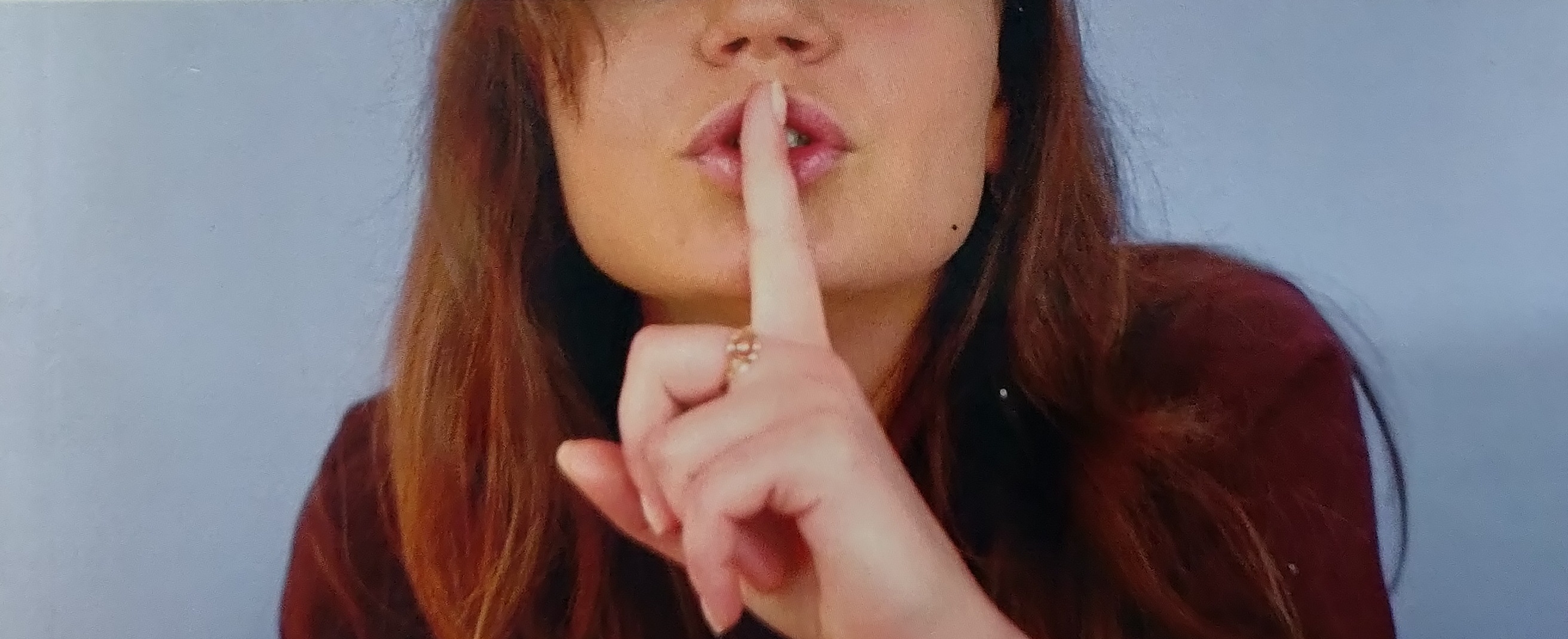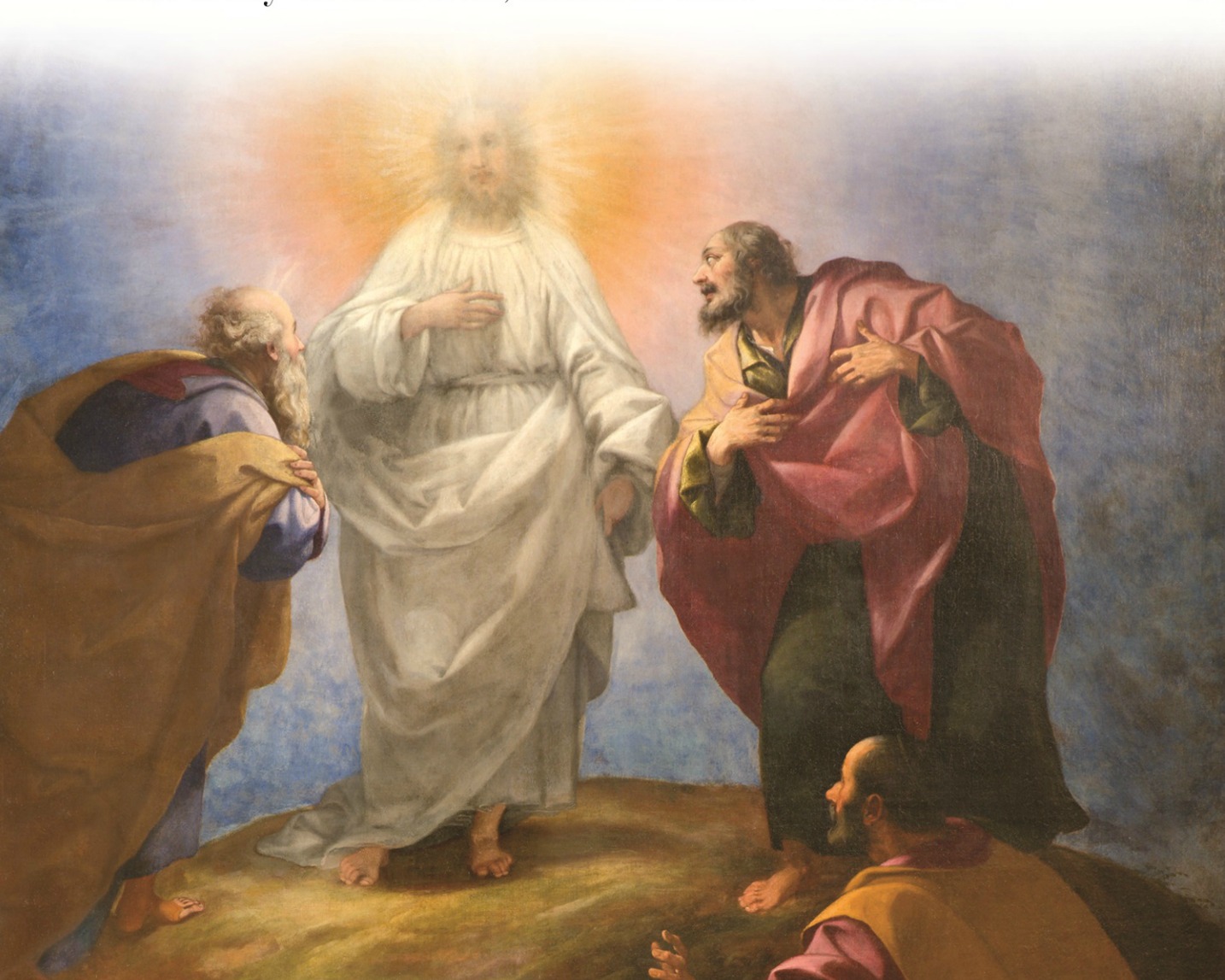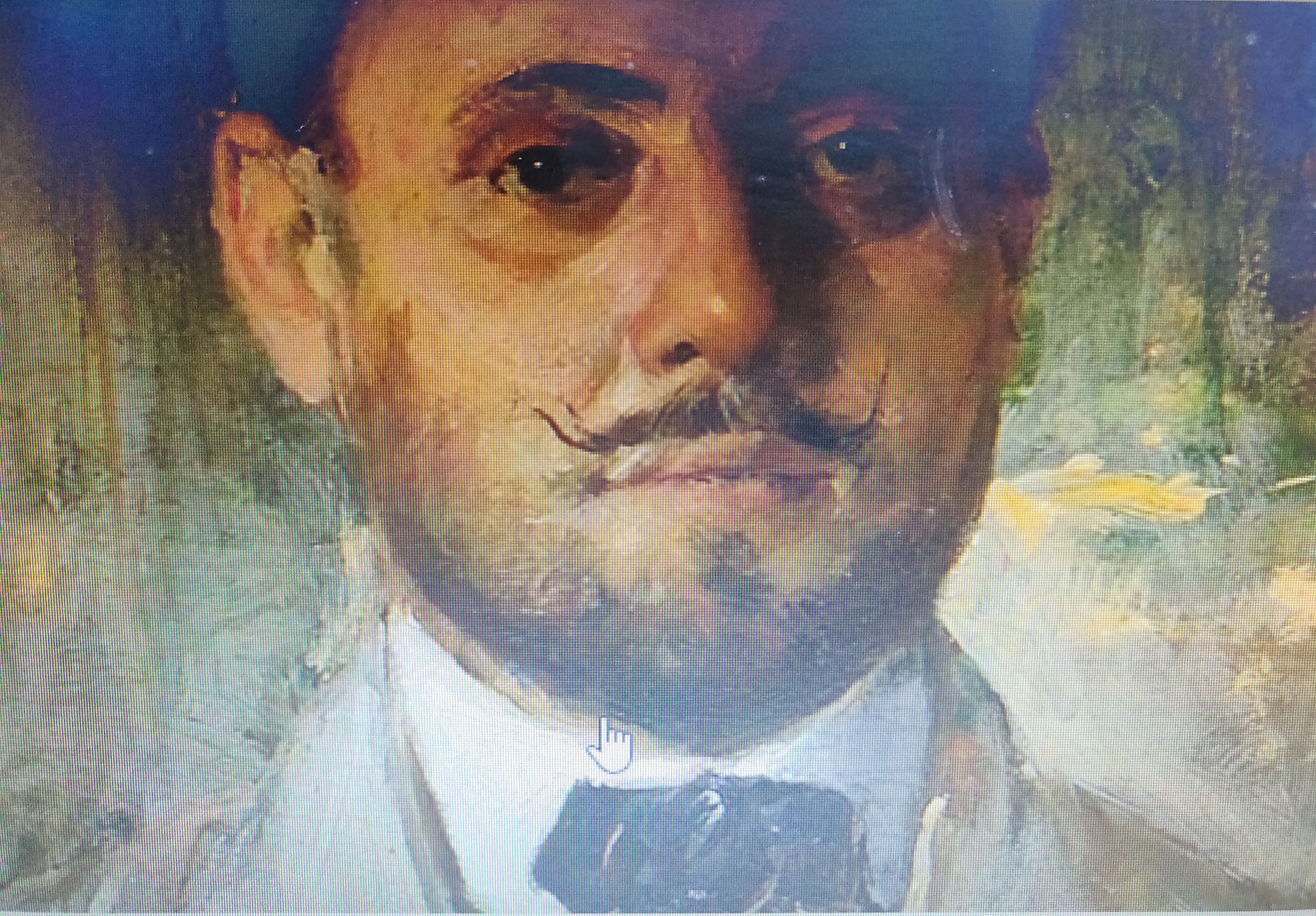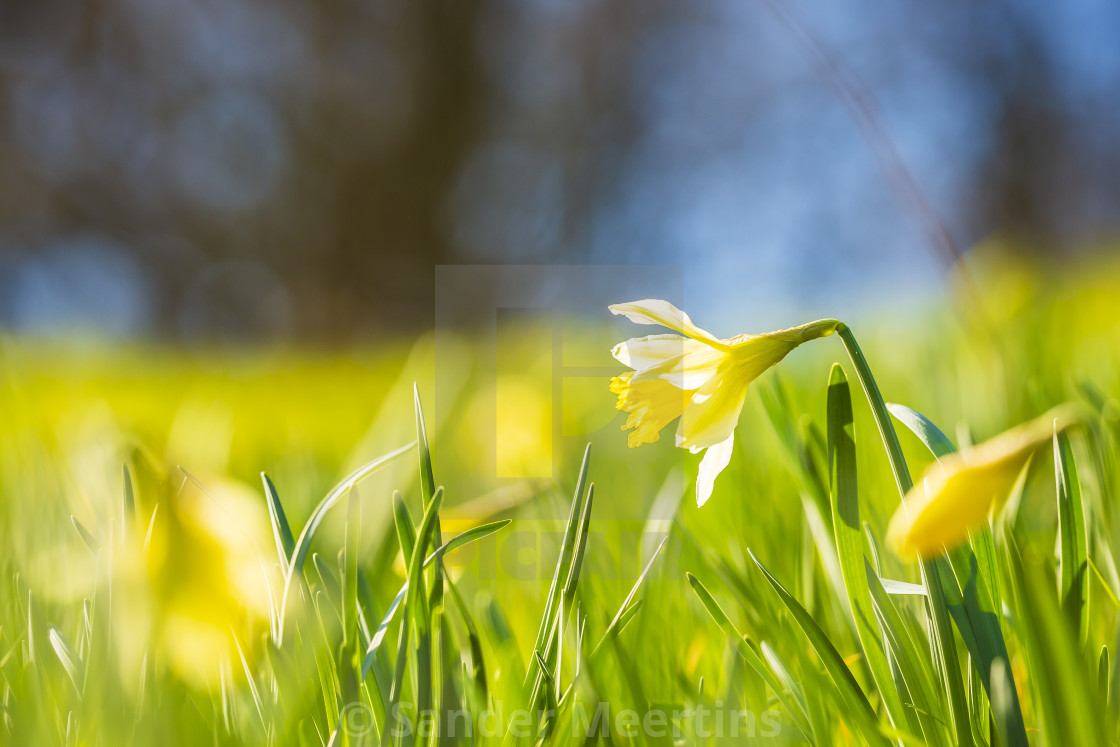Taming our Tongues this Lent
March 8, 2020Fasting,Self-improvement,Lent,Spiritual Reading,Tongue FastSelf-Improvement

30 Days to Taming your Tongue, by Deborah Smith Pegues.
Authentic Books, Secunderabad.
Indian edition reprint, 2015.
ISBN 978-817362-731-6. 141 pp, Price not indicated.
A book I chanced upon months ago is going to be part of my spiritual reading this Lent. It dwells on a very important aspect of fasting, or what the author calls a “tongue fast”. Deborah Smith Pegues’30 Days to Taming your Tongue is thus most appropriate for the remaining thirty-odd days of Lent.
You are bound to be tongue-tied when you run through the contents page: thirty chapters featuring thirty types of tongue you wouldn’t think existed. Here they go:
- the lying tongue
- the flattering tongue
- the manipulating tongue
- the hasty tongue
- the divisive tongue
- the argumentative tongue
- the boasting tongue
- the self-deprecating tongue
- the slandering tongue
- the gossiping tongue
- the meddling tongue
- the betraying tongue
- the belittling tongue
- the cynical tongue
- the know-it-all tongue
- the harsh tongue
- the tactless tongue
- the intimidating tongue
- the rude tongue
- the judgmental tongue
- the self-absorbed tongue
- the cursing tongue
- the complaining tongue
- the retaliating tongue
- the accusing tongue
- the discouraging tongue
- the doubting tongue
- the loquacious tongue
- the indiscreet tongue
- the silent tongue
Did you ever imagine a tongue could be so versatile? The list reads like progeny of one and the same tongue: notice they have the same “surname”!
Besides the theme, another feature that makes this book suitable for the season is that it is Scripture-based. In the prologue, the author quotes James 3:8: “No man can tame the tongue.” She states our hope is in “the Spirit of God”, to whom we must entrust the unruly member to be subjected on a daily basis.
How do we begin the process? The first step is to admit that we could be guilty of many of the negative uses of the tongue listed above; the truth will make us free. A Biblical quote at the head of each chapter is very reassuring. Then there are short stories, anecdotes, soul-searching questions and Scripture-based personal testimonies that combine to make each chapter a tongue- and life-changing experience. A positive affirmation or resolution at the end of each chapter rounds it off beautifully.
I am hopeful that a thirty-day crash course, or fast course, if you like, will give us a wholesome tongue, such that we will speak what is pleasing to God. The author, who is an experienced certified public accountant, Bible teacher, speaker, certified behavioural consultant specialising in understanding personality temperaments, writer and housewife of over twenty-five years’ standing, assures us that we will not be turned into “a Passive Patsy or a Timid Tom who avoids expressing personal boundaries, desires, or displeasure with a situation.” She recognises that most interpersonal problems will not be resolved without being confronted; however, there is a time and a way to say everything.
It may well take one less than a month to reading this valuable book; but I would love to go slow, meditating on each chapter. In the epilogue, the author recommends homing in “on areas where your mouth is particularly challenged.” One may have to spend several days or weeks on a lying tongue, for instance, and on a cursing tongue none at all.
To assess our daily progress there is a “tongue evaluation checklist” in Appendix A. Considering it more effective to focus on implementing positive behaviour than trying to avoid the negative, Appendix B offers over thirty “alternative uses of the tongue” that will bring glory to God and improve our interactions and relationships. Appendix C has passages comprising an “arsenal of tongue scriptures” that will fortify us and revolutionise our conversation.
The author very wisely remarks, “Teachers often teach that which they need to learn themselves.” And I say with the author, “I am no different.” Like her who wrote the book primarily for herself, I write this not as a review but primarily as a notice concerning a book that could help us to transform our tongues into a “wellspring of life.”
Are we spiritually awake?
March 8, 2020Transfiguration,Response to God's CallReflections,Lent
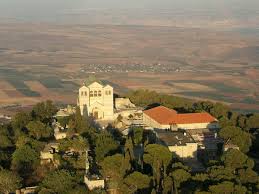
Lent 2020 - Day 12
Readings: Gen 12, 1-4; Ps 32, 4-5, 18-19, 20-22; Mt 1-9
Had Abram not responded to Yahweh’s call, there would be no Jewish people. He responded to God’s instruction to leave the country: it was a saga of hardships, a saga that bore fruit.
St Paul similarly exhorts us to undertake life’s pilgrim journey, relying on the power of God and testifying to Him. We are privileged to have been called.
In the Gospel, Jesus receives an endorsement in those glorious words from God the Father, the real import of which becomes clear only after the Resurrection.
What is our response to God’s call? Our everyday situations are seed of great things to come. Once in a while we may be privileged to witness a ‘transfiguration’; even then we may show a lacklustre response. So absorbed are we in our chores that we fail to get the larger picture.
Everything will change for the better the moment we are convinced that Jesus is the Son of the true God. We can be considered spiritually awake if we can we sing, “Our soul is waiting for the Lord”.
God doesn't need us to be picture-perfect
March 7, 2020PerfectionReflections,Lent
Lent 2020 - Day 11
Readings: Deut 26, 16-19; Ps 118, 1-8; Mt 5, 43-48
“Be perfect as your heavenly Father is perfect” is certainly a most curious and challenging mandate. What ‘perfection’ does Our Lord require of us, and why, when we are naturally flawed and will perhaps remain so?
But then, weren’t man and woman originally ‘perfect’, made in God’s image and likeness… until Original Sin spoiled the show?! Down the line, Moses urged the Jews to keep the law and justify the title of ‘Chosen Race’.
Whereas that relationship sounds ceremonial and self-seeking, Jesus, the new and greater Moses, not only proposes a filial relationship with God, He requires that this be reflected in our association with our fellow beings too. Thus, He perfects the old law, mandating that we love and pray even for those who regard themselves as our enemies….
Not to worry – God doesn’t demand that we be picture-perfect! He looks straight at our hearts moving continually to overcome our natural flaws, desirous of restoring things to their pristine state – in His image and likeness! Perfection is not that curious after all if we live each moment in God’s grace. And the search for perfection is less of a challenge when we are still and know that He is God – for in truth it is God who wins all our battles for us.
Called to be authentic
March 6, 2020Righteousness,AuthenticityReflections,Lent
The readings of the day invite us to reflect on how authentic our righteousness really is. Are we busy helping everybody else while neglecting our very own people struggling at home? Do we find ourselves strutting at a church service when we still have scores to settle with family or neighbours?
God wants us to do a self-appraisal: without this there can be no change for the better. He happily welcomes even the greatest sinner who has had a change of heart. “None of the transgressions which he has committed shall be remembered against him.” But if a good man turns wicked, “none of the righteous deeds which he has done shall be remembered” for much is expected from those to whom much has been given.
That is not asking for too much. Once on the path of righteousness we will experience true freedom. What’s more, we will have entry into the kingdom of Heaven which is the crown of righteousness.
All about Amor
March 5, 2020Manuel Antunes Amor,Joaquim de Araújo Mascarenhas,Fundação Oriente,Resposta a uma provocação,Dr Marcella Sirhandi,Boletim de Educação e Ensino,Macau,Earliest films in Goa,Goa,António Xavier TrindadePersonality
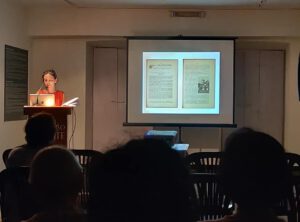
Maria do Carmo Piçarra’s talk at Fundação Oriente, Panjim, was titled “Behind the Portrait of Antunes Amor, Educator and Pioneer of Cinema in Goa”. A researcher at Instituto de Comunicação da Nova (ICNOVA), Lisbon; assistant professor at University of the Arts, London (UAL); and a Fundação Oriente scholar, Piçarra holds a doctorate in Communication Sciences. She is a film programmer; author of several publications, among them Azuis Ultramarinos. Propaganda colonial e censura no cinema do Estado Novo (2015) and Salazar vai ao cinema (2006, 2011), and principal editor of (Re)Imagining African Independence. Film, Visual Arts and the Fall of the Portuguese Empire (2017).
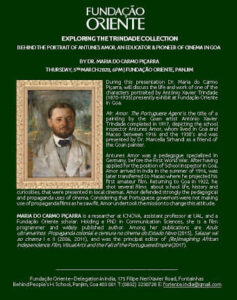
Piçarra contextualised a painting titled “Mr. Amor. The Portuguese Agent” (1917) from the Trindade Collection on permanent display. That striking piece of art by the Bombay-based Goan painter António Xavier Trindade (1870-1935) was gifted to the Foundation by Dr Marcella Sirhandi, a friend and biographer of the artist.
Piçarra spoke of Amor’s cinematographic forays in Macau, where he screened his first amateur movie. She also mentioned the films he made about school life, history, and so on, while in Goa. A strong defender of the pedagogical and propagandist uses of cinema, Amor had several of his films shown in local halls.
The precious little I already knew of Manuel Antunes Amor (1881-1940) I had heard from my father a quarter of a century ago; I was now surprised to see him again! Trained in Germany in the early twentieth century, Amor (‘Love’, in Portuguese) was a self-opinionated gentleman whose tenures as primary school inspector in Goa (1916, 1922) were mired in controversy.
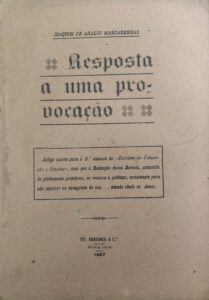
Finally, Piçarra's remark that Amor was particularly suspicious of lawyers reminded me of that high-profile polemic he had with Joaquim de Araújo Mascarenhas (1886-1946), a Goan legal eagle who doubled as Portuguese language teacher at Liceu Nacional de Nova Goa. A lethal combination it proved to be.
An article titled “O ensino primário e a incúria do Estado” ('Primary school education and State neglect') that Araújo Mascarenhas wrote for the maiden issue of the monthly Boletim de Educação e Ensino (April 1927) made Amor see red. He wrote a censorious rejoinder, “Sem autoridade nem razão” ('Devoid of authority or reason'), in the very next edition.
Araújo Mascarenhas dashed off a point-by-point rebuttal. The Boletim’s editorial board that comprised primary school teachers declined to publish it, possibly fearing the inspector's wrath. It led the redoubtable polemist to bring out a volume titled Resposta a uma provocação ('In Response to a Provocation').
Sadly, the Boletim folded up in August that year, but not before the long series of events had vitiated the atmosphere. No wonder the very gifted Mr Amor was someone many Goans loved to hate.
Prayer: mother of a thousand blessings
March 5, 2020St John Chrysostom,Queen Esther,Ask Seek KnockReflections,Lent
 Lent 2020 - Day 9
Lent 2020 - Day 9
It’s heartening to note God's love and concern for us all the time. When Queen Esther fled to the Lord, saying, ‘Help me who am alone and have no helper but thee, O Lord’, she received help because she asked with expectant faith. Jesus wants us to ask… seek… knock – so that we may receive… find… and have the door opened to us.
St John Chrysostom says that prayer is ‘the mother of a thousand blessings’. Let’s not ask only for material things; these will be added unto us if first we seek His kingdom. And let’s also pray for others whose needs may be much greater than ours.
Should we fail to receive what we’ve asked for, let’s continue to trust that our Father in Heaven will give what is good for us! We shall feel complete and contented if we realize that ‘Man shall not live by bread alone but by every word that proceeds from the mouth of God.’
Do we need any more signs?
March 4, 2020Wisdom,Nineveh,Signs,Christ,Solomon,Jonah,MessiahReflections,Lent
Lent 2020 - Day 8
What is the use of "signs" if, when they appear, we refuse to see them? They say the Jews always looked out for eloquent signs; but, alas, they failed to recognise the Messiah, the greatest Sign of all.
That's true of us as well. We behave like children that fail to see the truth of their parents' utterances. And when we sin we fail to see the goodness of God's plans for us....
Let today be a day of great blessing: may we have the wisdom of the people of Nineveh who, "from the greatest of them all to the least of them," heeded the Word of God made known by Jonah. And let us recognise that "something greater than Solomon is here," and "something greater than Jonah is here" and love Him: Christ our Lord who rose on the third day!
Nothing more reassuring than prayer
March 3, 2020God knows our needs,Prayer,Filial prayerReflections,Lent
Lent 2020 - Day 7
In the first reading today God speaks of the power of His Word: "It shall not return to me empty, but it shall accomplish that which I purpose, and prosper in the thing for which I sent it." The Gospel reminds us of the efficacy of filial prayer. And here I fondly remember my father reassuring me that God knows what we think even if we don't express it, and gives us what we want precisely when we need it: "... your Father knows what you need before you ask Him." I've also believed ever since that Jesus gave us the Our Father just to convince us to not hanker after the "right word".
Change of heart
March 2, 2020change of heart,conversionReflections,Lent
Lent 2020 - Day 6
The readings of the day give us a glimpse of what it will be when the Son of Man comes in His glory: we will be separated like the wheat from the chaff. Our eternal reward will hinge on whether or not we have loved and put God first in our life on earth by living according to what is honourable in His eyes. Let's then take this day as an invitation to conversion.
Lent: how and why
March 1, 2020St Paul II,Sexagesima,Quadragesima,Spiritual Spring,Septuagesima,Quinquagesima,LentReligion
Why is the 40-day period leading to the commemoration of Jesus’s Passion, Death and Resurrection called ‘Lent’? ‘Lent’ was originally a secular word (from lencten, the Old English word for ‘lengthen’) referring to the lengthening of days in the season of spring. Over the centuries ‘Lent’ became synonymous with the liturgical period as this always fell during the springtime in Europe. Besides, it was an easier word than the official Latin Quadragesima, literally, 40th day before Easter.
That today the period from Ash Wednesday to Holy Thursday (afternoon) actually comprises 44 days is another thing. This mismatch is a result of the post-Vatican II reorganization of the liturgical year and calendar: considering that the rite of ashes had become very popular, even more than many other days of greater solemnity, it was decided to have Lent prefixed by the days from Ash Wednesday to Saturday. Minus those days, the number is 40.
Historically, Quadragesima is the bare minimum period of Lent. In earlier times there was a remote preparation comprising three weeks: the Septuagesima, the Sexagesima, and the Quinquagesima that acted as a bridge between joyful Christmas and sobering Lent. The ashes have now become a reminder that the first Sunday of Lent – the Quadragesima – is round the corner, to begin the commemoration of the 40 days Jesus spent fasting in the wilderness.
That is how fasting has become inseparable from the penitential period. Earlier, fasting was throughout Lent except Sundays, in keeping with the primacy of this day as a joyful feast honouring the Resurrection of Christ. With the reorganization of Lent in 1969 it ceased to be a season of fasting. Presently, only two days – Ash Wednesday and Good Friday – are prescribed as days of fasting. For their part, Lenten Sundays play the role of shaping the week’s liturgical focus and provide the base of all the liturgy building up to Holy Week.
How long or short a period of Lent we have is finally a matter of individual choice; we know best why we abstain or refrain from certain foods; and how beneficial the season is going to be is finally left to me and my God to work out. However, if we are attuned to the liturgical seasons, we will already feel a pull towards Lent much before it actually begins; if fasting is not a matter of mere protocol we will happily go the extra mile. With the freedom we have received, we are, so to say, masters of our destiny.
Knowing the meaning and necessity of the Lenten season can help us guide our own destiny. St John Paul II summarized it well when he said: “Here then is revealed which, by its call to conversion, leads us through prayer, penance and acts of fraternal solidarity to renew or reinvigorate our friendship with Jesus in faith, to free ourselves from the deceptive promises of earthly happiness and once again to savour the harmony of the interior life in authentic love for Christ.”
That’s how and why Lent is considered a spiritual spring: we are renewed in fervour and become a vessel unto honour.
